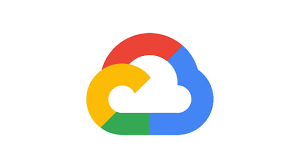Today, cloud computing applications and platforms are rapidly growing across all industries, serving as the IT infrastructure that drives new digital businesses. These platforms and applications have revolutionized the ways in which businesses function, and have made processes easier. In fact, more than 77 percent of businesses today have at least some portion of their computing infrastructure in the cloud.
While there are many cloud computing platforms available, two platforms dominate the cloud computing industry. Amazon Web Services (AWS) and Microsoft Azure are the two giants in the world of cloud computing.
While AWS is the largest cloud computing platform, Microsoft Azure is the fastest-growing and second-largest.
Before diving into what is Azure, you should first know what cloud computing is.
What is Cloud Computing?
Cloud computing is a technology that provides access to various computing resources over the internet. All you need to do is use your computer or mobile device to connect to your cloud service provider through the internet. Once connected, you get access to computing resources, which may include serverless computing, virtual machines, storage, and various other things.
Basically, cloud service providers have massive data centers that contain hundreds of servers, storage systems and components that are crucial for many kinds of organizations. These data centers are in secure locations and store a large amount of data. The users connect to these data centers to collect data or use it when required. Users can take advantage of various services; for example, if you want a notification every time someone sends you a text or an email, cloud services can help you. The best part about cloud platforms is that you pay only for the services you use, and there are no charges upfront.
Cloud computing can be used for various purposes: machine learning, data analysis, storage and backup, streaming media content and so much more. Here’s an interesting fact about the cloud: all the shows and movies that you see on Netflix are actually stored in the cloud. Also, the cloud can be beneficial for creating and testing applications, automating software delivery, and hosting blogs.
Why is Cloud Computing Important?
Let’s assume that you have an idea for a revolutionary application that can provide great user experience and can become highly profitable. For the application to become successful, you will need to release it on the internet for people to find it, use it, and spread the word about its advantages. However, releasing an application on the internet is not as easy as it seems.
To do so, you will need various components, like servers, storage devices, developers, dedicated networks, and application security to ensure that your solution works the way it is intended to. These are a lot of components, which can be problematic.
Buying each of these components individually is very expensive and risky. You would need a huge amount of capital to ensure that your application works properly. And if the application doesn’t become popular, you would lose your investment. On the flip side, if the application becomes immensely popular, you will have to buy more servers and storage to cater to more users, which can again increase your costs. This is where cloud computing can come to the rescue. It has many benefits, including offering safe storage and scalability all at once.
Azure is a cloud computing platform and an online portal that allows you to access and manage cloud services and resources provided by Microsoft. These services and resources include storing your data and transforming it, depending on your requirements. To get access to these resources and services, all you need to have is an active internet connection and the ability to connect to the Azure portal.
Things that you should know about Azure:
- It was launched on February 1, 2010, significantly later than its main competitor, AWS.
- It’s free to start and follows a pay-per-use model, which means you pay only for the services you opt for.
- Interestingly, 80 percent of the Fortune 500 companies use Azure services for their cloud computing needs.
- Azure supports multiple programming languages, including Java, Node Js, and C#.
- Another benefit of Azure is the number of data centers it has around the world. There are 42 Azure data centers spread around the globe, which is the highest number of data centers for any cloud platform. Also, Azure is planning to get 12 more data centers, which will increase the number of data centers to 54, shortly.
-
What are the Various Azure Services and How does Azure Work?
Azure provides more than 200 services, are divided into 18 categories. These categories include computing, networking, storage, IoT, migration, mobile, analytics, containers, artificial intelligence, and other machine learning, integration, management tools, developer tools, security, databases, DevOps, media identity, and web services. Let’s take a look at some of the major Azure services by category:
Compute Services
-
Virtual Machine
This service enables you to create a virtual machine in Windows, Linux or any other configuration in seconds.
-
Cloud Service
This service lets you create scalable applications within the cloud. Once the application is deployed, everything, including provisioning, load balancing, and health monitoring, is taken care of by Azure.
-
Service Fabric
With service fabric, the process of developing a microservice is immensely simplified. Microservice is an application that contains other bundled smaller applications.
-
Functions
With functions, you can create applications in any programming language. The best part about this service is that you need not worry about hardware requirements while developing applications because Azure takes care of that. All you need to do is provide the code.
Networking
-
Azure CDN
Azure CDN (Content Delivery Network) is for delivering content to users. It uses a high bandwidth, and content can be transferred to any person around the globe. The CDN service uses a network of servers placed strategically around the globe so that the users can access the data as soon as possible.
-
Express Route
This service lets you connect your on-premise network to the Microsoft cloud or any other services that you want, through a private connection. So, the only communications that will happen here will be between the enterprise network and the service that you want.
-
Virtual network
The virtual network allows you to have any of the Azure services communicate with one another privately and securely.
-
Azure DNS
This service allows you to host your DNS domains or system domains on Azure.
Storage
-
Disk Storage
This service allows you to choose from either HDD (Hard Disk Drive) or SSD (Solid State Drive) as your storage option along with your virtual machine.
-
Blob Storage
This service is optimized to store a massive amount of unstructured data, including text and even binary data.
-
File Storage
This is a managed file storage service that can be accessed via industry SMB (server message block) protocol.
-
Queue Storage
With queue storage, you can provide stable message queuing for a large workload. This service can be accessed from anywhere in this world.
Next in this what is Azure article, let’s look at what are the uses of Azure.
Why Use Azure?
Now that you know more about Azure and the services it provides, you might be interested in exploring the various uses of Azure.
- Application development: You can create any web application in Azure.
- Testing: After developing an application successfully on the platform, you can test it.
- Application hosting: Once the testing is done, Azure can help you host the application.
- Create virtual machines: You can create virtual machines in any configuration you want with the help of Azure.
- Integrate and sync features: Azure lets you integrate and sync virtual devices and directories.
- Collect and store metrics: Azure lets you collect and store metrics, which can help you find what works.
- Virtual hard drives: These are extensions of the virtual machines; they provide a huge amount of data storage.



